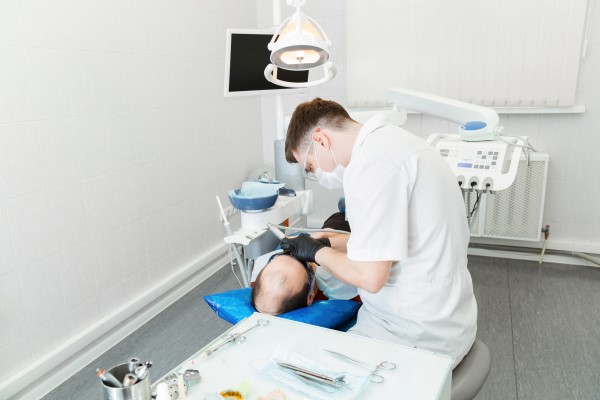Why Is a Tooth Extraction Considered Oral Surgery?
Understanding that Oral Surgery includes tooth extractions allows dental patients to recognize that extractions are serious dental treatments. General dentists often perform tooth extractions on their patients only when the tooth is no longer saveable. Therefore, a tooth replacement option must be chosen whenever a tooth is extracted.
An overview of oral surgery and tooth extractions
There are two different types of extractions: simple tooth extractions and surgical extractions. Simple tooth extractions are performed when the entire tooth is located above the gum line and can be removed using special dental tools. Surgical extractions require one to undergo oral surgery when a tooth has only partially erupted from the gum line or has not erupted at all.
The only option is to perform oral surgery when a tooth has not fully erupted and needs to be extracted. The process requires a general dentist to give the patient a local anesthetic, make a small incision in the gum tissue to access the entire tooth, and then use special dental tools to remove the tooth. Surgical recovery takes about three to four days. Patients who undergo surgical tooth extractions need to choose one of the many tooth replacement options as soon as possible to replace their missing teeth, such as dental implants or dental bridges.
Common reasons why surgical tooth extractions are necessary
The list below includes some additional reasons that require one or more teeth to be extracted via oral surgery.
The tooth is in severe decay
Whenever a tooth is in severe decay, it is no longer saveable and thus needs to be extracted. Since it is more likely than not that removing a severely decayed tooth will result in the tooth breaking into pieces, surgical extractions are necessary to ensure that all of the pieces of the tooth have been removed. Patients can expect the procedure to take somewhere between 20 and 40 minutes.
When a tooth’s roots are difficult to remove
When a patient requires extraction for a tooth that either has very long roots or curved roots, the extraction process is more difficult to perform. This type of extraction is more complicated and often necessitates oral surgery. A small incision is made in the gums to allow the dentist to access the roots and remove the tooth in its entirety. Therefore, the simple extraction method is not recommended, as it can cause bone and tooth breakage.
To prevent overcrowding
Some dental patients do not have enough room in their mouth to accommodate all their teeth, including permanent and wisdom teeth. When any teeth that need to be removed to prevent overcrowding are located beneath the gum line, oral surgery is necessary to remove the teeth. After removal, the patient often needs teeth straightening services to align all of their remaining teeth.
In need of a tooth extraction?
Oral surgery may be necessary if the tooth is so severely damaged that general dentists can no longer save the tooth with traditional restorations. Do you have questions about the tooth extraction process? Call our Plano office to learn more or to schedule an appointment.
Request an appointment here: https://oracaredentistry.com or call OraCare Dentistry at (469) 277-2888 for an appointment in our Plano office.
Check out what others are saying about our dental services on Yelp: Oral Surgery in Plano, TX.
Related Posts
Dental restorations can help you maintain your oral health and prevent further decay. A dental filling is one of the most common restorative procedures used to treat mild to moderate cavities and other dental damage. This type of restoration restores the function and appearance of a damaged or decayed tooth. Let us walk you through…
No other oral restorations are like dental implants when it comes to replacing missing teeth. These are the only solution for missing teeth that replaces the roots of teeth. These roots serve an important purpose: keeping the jaw stimulated and healthy.When missing teeth are not replaced with dental implants, the person's jaw will begin to…
A family dentist offers comprehensive care to individuals of all ages, making them an ideal option for older adults looking to maintain good oral health. As people age, their dental needs evolve, and regular visits to a family dentist can help address specific issues that arise in later years. Older adults often face unique dental…
You will need cosmetic dental services if you have vampire teeth. These are pointed, sharp canine teeth. Seeing your general dentist will resolve the issue. Here are specific cosmetic dental services available to treat pointed canine teeth.Cosmetic dental services like tooth reshaping can trim down the canine teeth. This treatment changes the surface, shape, and…
